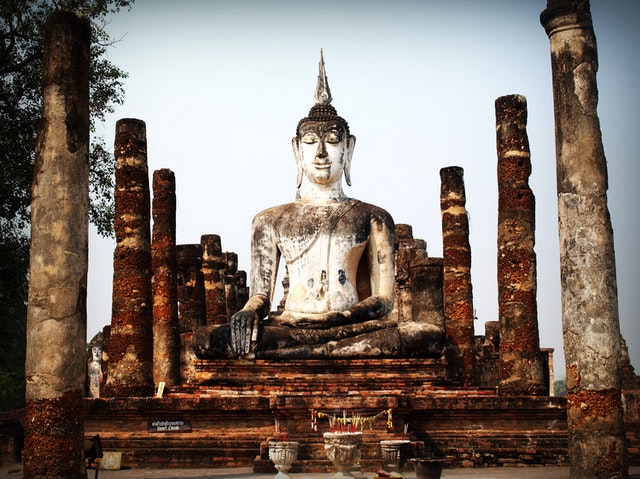
In 2005 on my first trip to Tibet, I knew Tibet was holding tight to its identity and faced an uncertain future. The railroad connecting China from the north to this remote plateau was just about to be completed, bringing in 700,000 Chinese citizens and the continued dilution of the Tibetan culture in the process. I realized this was the perfect time to go to the roof of the world, several thousand feet above sea level. I wanted to study Buddhism and to be in the sacred homeland of levitating monks, sages, shamans, and great seers before they disappeared from the spiritual capital of the world forever.

I went on to study Buddhism in China and Vajrayana Buddhism practiced by the Newar people of the Katmandu Valley, Nepal. I still go up to Santa Fe and take classes at the Upaya Institute and Zen Center and a Buddhist temple is a block away from my house where you can find me most weeks. I am not a practicing Buddhist, however, I respect and admire anything that encourages its people to avoid self-indulgence and also self-denial.
My background affords me the opportunity to be culturally sensitive to the sacred statues associated with Buddhism and I know when I see Buddha on the ground that the owner does not understand the faux pas. In Buddhist countries, the statue of Buddha is always raised up high on a pedestal, table, or wall mount and never on the floor. The custom to elevate the Buddha image developed from a sensitivity to express the essence of the Buddha’s teaching.
How we choose to place a Buddha image is a reflection of our relationship to what it represents for ourselves.
Here are five reasons not to place a Buddha statue on the floor:
- Out of Respect – Buddha means “awakened one,” the highest state of spiritual wisdom and capacity for love called Enlightenment. Buddha the Master Teacher but Buddha within.
- The third eye – Buddha represents the stage of consciousness that is experienced through meditative awareness. Pure consciousness is symbolized by the third eye, so we raise the Buddha to represent this consciousness.
- Lightness rises upward through the heart – In the language of energy; heavy things fall to the floor, including negative thoughts. Lightness is that upward movement – to transcend. This is why Buddha images are typically raised on a table.
- The floor is dirty – Higher is considered cleaner and therefore more honorable.
- Cultural Sensitivity – Buddhism is both a philosophy and religion. Placing Buddha above the ground shows insight into a culture that passed on the gifts of Enlightenment to us.
For whatever reason you choose to have a Buddha, the wisdom he embodies is a gift. Buddha is all about caring and compassion, so let’s all be respectful.
Have any Feng Shui questions? Feel free to contact me at michelle@michellecromer.com and sign up for your Power Color or visit me on Facebook at Michelle Cromer Feng Shui.

Leave a Reply